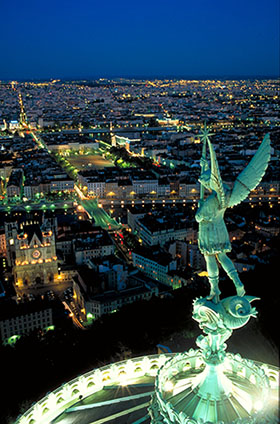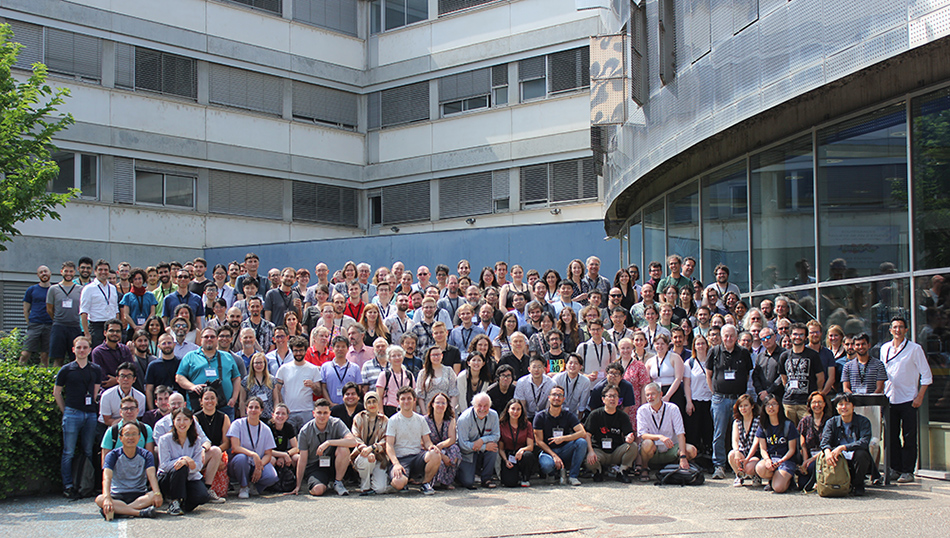Staratlyon 2023
Du 26/06/2023 au 30/06/2023
Campus de la Doua, CPE LYON - Rue Victor Grignard 69100 Villeurbanne
Accueil
Les étoiles sont les éléments visibles des structures cosmiques et, à ce titre, elles sont essentielles à notre compréhension de l'Univers et des processus physiques qui régissent leur évolution. La formation des étoiles est un élément moteur du cycle interstellaire qui conduit l'évolution cosmique. Bien que la formation des étoiles soit reconnue comme étant au centre d'un large éventail de processus astrophysiques (formation et évolution des galaxies, évolution et destruction des nuages moléculaires, formation des planètes, et finalement le développement de la vie), elle est l'un des processus les moins bien compris dans l'Univers.
 Divers nouveaux instruments ont été conçus pour sonder différents aspects de la matière interstellaire formant des étoiles dans la Voie lactée, ainsi que dans des galaxies lointaines. Les interféromètres actuels, tels que ALMA, SMA et NOEMA, continuent d'augmenter la résolution spatiale disponible avec les meilleures capacités d'observation submillimétriques et millimétriques. Ils donnent accès à des structures à petite échelle telles que des nuages moléculaires extragalactiques, des disques d'accrétion, des sites de lancement d'outflow et la fragmentation à l'échelle des coeurs denses dans la Voie lactée. Les données d'observation fournies par les polarimètres sur le satellite Planck, le SMA ou l'ALMA fournissent des informations indirectes sur la structure du champ magnétique dans l'ISM ainsi que sur la nature de la poussière galactique. Enfin, la formation d'étoiles est l'une des questions fondamentales auxquelles le JWST doit répondre en sondant les régions formant les étoiles avec une sensibilité sans précédent dans l'infrarouge moyen. Parallèlement, d'importants efforts internationaux sont entrepris pour mettre au point de larges modèles numériques conçus pour la formation des étoiles, la formation et l'évolution des nuages moléculaires, ainsi que la formation des galaxies. Ces simulations sont très difficiles en raison de la complexité de la physique multi-échelle, qui nécessite le développement de nouveaux algorithmes visant des architectures massivement parallèles.
Divers nouveaux instruments ont été conçus pour sonder différents aspects de la matière interstellaire formant des étoiles dans la Voie lactée, ainsi que dans des galaxies lointaines. Les interféromètres actuels, tels que ALMA, SMA et NOEMA, continuent d'augmenter la résolution spatiale disponible avec les meilleures capacités d'observation submillimétriques et millimétriques. Ils donnent accès à des structures à petite échelle telles que des nuages moléculaires extragalactiques, des disques d'accrétion, des sites de lancement d'outflow et la fragmentation à l'échelle des coeurs denses dans la Voie lactée. Les données d'observation fournies par les polarimètres sur le satellite Planck, le SMA ou l'ALMA fournissent des informations indirectes sur la structure du champ magnétique dans l'ISM ainsi que sur la nature de la poussière galactique. Enfin, la formation d'étoiles est l'une des questions fondamentales auxquelles le JWST doit répondre en sondant les régions formant les étoiles avec une sensibilité sans précédent dans l'infrarouge moyen. Parallèlement, d'importants efforts internationaux sont entrepris pour mettre au point de larges modèles numériques conçus pour la formation des étoiles, la formation et l'évolution des nuages moléculaires, ainsi que la formation des galaxies. Ces simulations sont très difficiles en raison de la complexité de la physique multi-échelle, qui nécessite le développement de nouveaux algorithmes visant des architectures massivement parallèles.
Le but de cet atelier est de rassembler les communautés liées à la formation des étoiles à travers les échelles physiques et les temps cosmiques. Ce sujet est particulièrement opportun pour définir les grandes explorations de l'Univers de formation des étoiles qui seront menées dans la prochaine décennie avec de nouveaux instruments conçus pour l'observation et le calcul haute performance exascale. L'état de l'art des trois piliers de l'astrophysique moderne, théorie, observation et simulations numériques, sera représenté. Le programme sera divisé en huit sessions. Chaque session sera couverte par des revues invitées, des présentations invitées ainsi qu'une grande partie réservé pour des contributions orales.
Au plaisir de vous voir à Lyon au début de l'été 2023 !

 Divers nouveaux instruments ont été conçus pour sonder différents aspects de la matière interstellaire formant des étoiles dans la Voie lactée, ainsi que dans des galaxies lointaines. Les interféromètres actuels, tels que ALMA, SMA et NOEMA, continuent d'augmenter la résolution spatiale disponible avec les meilleures capacités d'observation submillimétriques et millimétriques. Ils donnent accès à des structures à petite échelle telles que des nuages moléculaires extragalactiques, des disques d'accrétion, des sites de lancement d'outflow et la fragmentation à l'échelle des coeurs denses dans la Voie lactée. Les données d'observation fournies par les polarimètres sur le satellite Planck, le SMA ou l'ALMA fournissent des informations indirectes sur la structure du champ magnétique dans l'ISM ainsi que sur la nature de la poussière galactique. Enfin, la formation d'étoiles est l'une des questions fondamentales auxquelles le JWST doit répondre en sondant les régions formant les étoiles avec une sensibilité sans précédent dans l'infrarouge moyen. Parallèlement, d'importants efforts internationaux sont entrepris pour mettre au point de larges modèles numériques conçus pour la formation des étoiles, la formation et l'évolution des nuages moléculaires, ainsi que la formation des galaxies. Ces simulations sont très difficiles en raison de la complexité de la physique multi-échelle, qui nécessite le développement de nouveaux algorithmes visant des architectures massivement parallèles.
Divers nouveaux instruments ont été conçus pour sonder différents aspects de la matière interstellaire formant des étoiles dans la Voie lactée, ainsi que dans des galaxies lointaines. Les interféromètres actuels, tels que ALMA, SMA et NOEMA, continuent d'augmenter la résolution spatiale disponible avec les meilleures capacités d'observation submillimétriques et millimétriques. Ils donnent accès à des structures à petite échelle telles que des nuages moléculaires extragalactiques, des disques d'accrétion, des sites de lancement d'outflow et la fragmentation à l'échelle des coeurs denses dans la Voie lactée. Les données d'observation fournies par les polarimètres sur le satellite Planck, le SMA ou l'ALMA fournissent des informations indirectes sur la structure du champ magnétique dans l'ISM ainsi que sur la nature de la poussière galactique. Enfin, la formation d'étoiles est l'une des questions fondamentales auxquelles le JWST doit répondre en sondant les régions formant les étoiles avec une sensibilité sans précédent dans l'infrarouge moyen. Parallèlement, d'importants efforts internationaux sont entrepris pour mettre au point de larges modèles numériques conçus pour la formation des étoiles, la formation et l'évolution des nuages moléculaires, ainsi que la formation des galaxies. Ces simulations sont très difficiles en raison de la complexité de la physique multi-échelle, qui nécessite le développement de nouveaux algorithmes visant des architectures massivement parallèles.Le but de cet atelier est de rassembler les communautés liées à la formation des étoiles à travers les échelles physiques et les temps cosmiques. Ce sujet est particulièrement opportun pour définir les grandes explorations de l'Univers de formation des étoiles qui seront menées dans la prochaine décennie avec de nouveaux instruments conçus pour l'observation et le calcul haute performance exascale. L'état de l'art des trois piliers de l'astrophysique moderne, théorie, observation et simulations numériques, sera représenté. Le programme sera divisé en huit sessions. Chaque session sera couverte par des revues invitées, des présentations invitées ainsi qu'une grande partie réservé pour des contributions orales.
Au plaisir de vous voir à Lyon au début de l'été 2023 !
